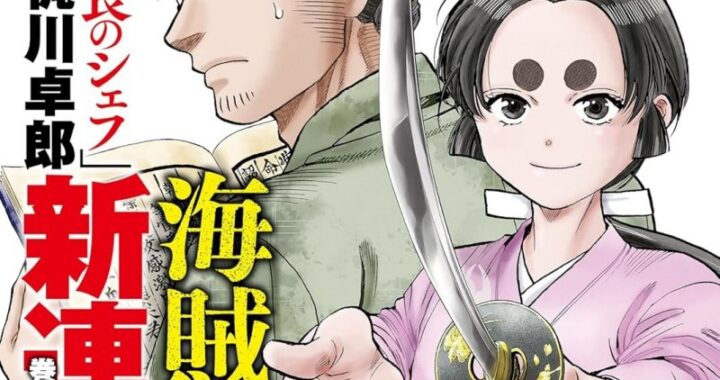What They Say:
Giant Robo OVA the Complete Original Series contains OVA episodes 1-7 of the anime directed by Yasuhiro Imagawa and has both the new and old English Dubs!
In a marvelous future, Earth is in the midst of conquering its energy crisis thanks to the Shizuma Drive, a miracle invention from a troubled scientist. But dark forces conspire to tip the balance of power in their favor; the Big Fire Organization seeks to neutralize the Shizuma Drive in order to create a new energy crisis, and one of their key operatives has his own secret plans to take revenge and plunge the world into darkness.
Standing against Big Fire is the International Police Organization, a heroic and colorful assemblage of mighty warriors, secret agents, and super scientists. The IPO’s youngest member is Daisaku Kusama, an earnest 12-year-old boy who commands the mightiest super robot in the world: Giant Robo!
The Review:
Content: (please note that content portions of a review may contain spoilers)
When asked which OAV series is the greatest of all time, which one comes to your mind? It’s difficult to to debate for certain as the OAV (Original Animated Video or direct-to-video) format began in 1983 with Dallos, and became popularized with 1985’s Megazone 23. I asked a bunch of my facebook friends and got a lot of various but consistent responses: Bubblegum Crisis for its music and cyberpunk influence, Macross Plus for innovative aerial sequences and music as well, Gunbuster for its emotional range, Ah My Goddess for its romantic fun, Legend of the Galactic Heroes for its epic length, or another not listed here. All of these are fine choices, seriously. But to me, from its insane beginning to its emotional finale, the answer will always be Giant Robo.
The Earth is a truly fascinating futuristic retro world here. Everything runs not on fossil fuels or nuclear power or such, but on a miracle device called the Shizuma Drive. The evil organization Big Fire, led primarily by a superpowered group known as The Magnificent Ten, has engineered a plot to cause world darkness with anti-Shizuma Drives, duplicating a horrible similar happening called The Tragedy of Bashtarle from 10 years back. Standing in their way are the IPO’s own team of super operatives, The Experts of Justice. The first of seven episodes starts with two of the Experts, long-legged Ginrei and burly Tetsugyu, having grabbed Dr. Shizuma and one of three anti-Shizuma drives away from Big Fire, who have sent a ton of masked operatives in pursuit. Adding to the danger is a train that transforms into a big mechanical dragon. But never fear as the Experts are guided by young sounding voice their way to a big oil tanker, from which a massive metal hand bursts out and saves the heroes. Daisaku comes out with Giant Robo to destroy the train-dragon and carry everyone off to safety.
So begins this sixties-styled adventure. The stakes are laid out in this first episode as Big Fire and the Experts have been battling apparently for a good while, and seemingly will do so after this series is over. At the center we have 12 year old Daisaku who is thrust into this fight by outside events and continues it bravely, protected by something that seems to be more than just a loyal hunk of metal at times. We get get these colorful Experts like Taisou, who likes to drink heavily and be a big brother figure to the team (which also includes his real brother Tetsugyu). There’s also Dr. Goh, who seemingly has no eyes most of the time, Issei the magical monk and Yoshi the blue skinned amazon. All are led by the ‘Silent’ Chief Chujo who’s devastating power is definitely a sight to behold. On the other side, there are powerful villains though we initially get to see a couple in action. Most notable are the imposing Impact Alberto and his speedy assistant Ivan, as well as the seemingly inhuman non-talker Ko Enshaku. We do get to see the rest of the Magnificent Ten in action later though, many of whom are unsure about their young operative Genya, and the Vogler Sphere of darkness.
There are many reasons this series has resonated with anime fans since the 90s. Primarily they have to do with the story in 3 respects. It was written by Eiichi Matsuyama and Yasuhiro Imagawa with serious depth and drama as we come to understand motivations behind Daisaku’s never say die heroism and Genya’s need for vengeance at all cost. Although we see how prior terrible events have shaped many characters on both sides (while some characters are kept wonderfully mysterious), it’s the dynamic between these two figures that makes things work. On top of this we get the Taisou / Alberto feud making things entertaining, Ginrei (whose own story is quite compelling) and Murasame the Immortal going all out to protect Daisaku, and the internal intrigues of the Big Fire organization.
This brings me to the second aspect of the story I liked so much which was the use of Mitseru Yokoyama’s characters. Outside of him having created Tetsujin No. 28 (AKA Gigantor), I had no real idea who Yokoyama was going into the show. So it was fun to be educated on his other work such as Suikoden, Mars, Masked Ninja Akakage, Babel II and the original live action Giant Robo brought to the U.S. as Johnny Sokko and his Giant Robot. I found this show to be a wonderful teaching tool and microcosm of Yokoyama’s worlds. At the time, I had friends who (with new tapes miraculously appearing at their houses) would bring each episode to the local anime club meetings, walk away similarly awestruck, and dissect where each character was from and whether they’d been turned into heroes or villains, similar to how Osamu Tezuka would use his ‘star system’ characters as an anime acting troupe. So it was a really good chance to learn about a new anime creator (well new to me at least).
This brings me to the third aspect: the pacing. This has more meaning for 90s collectors than modern ones but it still resonates. Back then, we did have the internet but the very notion of streaming was just that, a notion. There was no instant gratification for fans then. Everything hadn’t been released in the U.S. so many fans hunted VHS titles via the fansub circuit found often on the Anime Web Turnpike. (Thanks Jay!) Anime import companies were just hitting their stride in this era. L.A. Hero initially had the domestic license for Giant Robo, but it would be acquired by U.S. Renditions, then Manga Entertainment later on and subsequently Anime Works. During all this, each episode would be released in Japan and it would end on a cliffhanger, with 8-9 months between each one. This being the case, fans such as myself would agonize over the story’s direction and the character’s fates. So however we could acquire a new episode as quickly as possible, we did so. We just had to have it. The story plays out like an epic 3 act play, broken into 7 volumes (2-3-2). Each volume built on what came before and kept folks riveted and speculating, until the final volume which had truly one of the best endings to an anime series I’ve ever seen, one I absolutely did not see coming. Yes, there were events that seemed to be coming afterward, but a complete story was told, which is something that seems to be a rarity in anime nowadays.
I have to touch on a couple more elements that make Giant Robo such an awesome series. The first is the animation. Director Yasuhiro Imagawa (of the wacky Mobile Fighter G Gundam) had about 40 animators working on each volume and man does it show. The fight sequences between the human characters are fluid, fast-paced and hyper kinetic. The mecha battles (which interestingly enough aren’t really the focus of this super-robot anime) are intentionally slow paced. Giant Robo itself is one heavy, clunky machine, moving with a deliberately slow gait, adding gravitas to its movements like Mobile Police Patlabor to a degree. Imagawa had character designers Toshiyuki Kubooka (Lunar), Akihiko Yamashita. (Princess Nine) and Masami Ozone (Cyber City Oedo 808) specifically adapt all of Yokoyama’s characters to a 60’s styled cartoony aesthetic, like Gigantor and Speed Racer. So the overall look was an interesting mix of past and present (at the time) techniques. The other element is the thunderous soundtrack composed by Masamichi Amano and performed by the Warsaw Philharmonic Orchestra. It’s almost another character talking throughout the entire series punching up the high-octane action scenes and enhancing the importance of dramatic sequences. It’s some of the most awesome stuff to hear this side of a John Williams Star Wars score, so much I find myself playing conductor, especially at the climaxes and cliffhangers.
Audio:
There are 4 audio tracks present for each episode The original Japanese comes in Stereo 2.0. The English Animaze / Magnitude 8 Post version from the L.A. Hero and Manga Entertainment releases comes in Stereo 2.0, while the NYAV Post dub from the Anime Works release comes in Stereo 2.0 and Surround Sound 5.1. There are also separate commentary tracks for most of the episodes which we’ll discuss in the Extras section. It’s interesting to listen to the wildly divergent English tracks here at the Anime is so exaggerated and boisterous while the NYAV one is closer to the Japanese nuances. More on this in the Extras section as well.
Video:
This is the sort of thing that makes me glad that home video has evolved from VHS and LD to DVD to blu ray, all of which Giant Robo has been released onto. It’s great to see the amount of visual information BD is capable of holding so that saturation can be higher and overall picture is brighter than prior formats while the contrasts are kept in good balance. The aspect ratio remains the same. The results here are beautiful, top-notch pictures.
Packaging:
There is a slipcase with artwork taken from the Japanese blu-ray of various characters arranged in a v-formation on Robo’s head and the title masthead squarely in the center. The back has descriptive text taking up the middle 2/3 with artwork surrounding the remaining area. Technical information takes up the bottom section. Inside is a reversible insert which shows another cover of GR holding two characters. The discs are placed on either side of the blu-ray case. The 5 postcards are enclosed in the blu ray case.
Menu:
Various clips play with music from the soundtrack in the background. Playback options are displayed horizontally. When selected, options for various features are displayed vertically. The episodes are listed vertically with their original release dates on the side.. The video here is presented in the full 16:9 ratio.
Extras:
Good lord, where to begin…..
-Commentaries on 5 episodes by original crews – These were a total highlight. The various Japanese ones were insightful but getting the straight scoop from Les and Mary Claypool on being the first to dub this series while the show was still being made and thus had little direction on how to proceed sort of made me feel for them. It also explains a heck of a lot about how some of the pronunciations played out as they had to seemingly guess how both Japanese and American audiences might respond to things. It’s also fun to hear them talk about early voice work from people like Steve Blum and Sean Schimmel and the like.
-Vintage Japanese previews & commercials, , Japanese Blu-ray previews & commercials, Vintage English trailers, HD Remastered English trailers
-DVD Premium Remaster Edition Openings,
-Vintage Italian special: The Black Briefcase, Vintage Italian trailers – listening to these made me want to hear the entire show in Italian now. Such gusto and power in everyone’s vocal presence.
-Super Robot Wars appearances, PlayStation 2 Game Overview – Ah the vintage video game footage. No matter how far we come with video game technology, it’s always fun to see old school graphics play out. I’ve never played either game but both look fun from what I see here.
-Animatics/Pencil Tests for Episodes 2+6 – I love to watch the animation process at work. We get sketches being animated with time code intermittent with full color finished shots which are not remastered, so it makes the regular content look that much better. Great stuff.
-Interview: G-Robo Battle Talk, Interview: Memories of Giant Robo – always fun to hear from the creators
-Scoring Giant Robo (Episodes 1-3, 6-7) – The Warsaw Philharmonic Orchestra are shown in action performing and recording the thunderous soundtrack. Initially it’s a single wide shot so not necessarily great visually, but later we get to various angles highlighting the individual musicians. Some portions have a small clip in the lower corner of the given scene they’re scoring.
-Vintage English Credits (Animaze, NYAV versions) – this was an interesting contrast in styles and fonts. The NYAV ones clearly came from a terrible source though. One set of these were impossible to read.
-Art Gallery: Keyart & Color Works, Art Gallery: Model Sheets & Production Art,
-Liner Notes: The World of Giant Robo: The Animation – Mike Toole throws out a good chunk of knowledge about the creators and inspirations behind this series. There’s a ton of infot to read here.
– 5 postcards
In Summary:
I’ve come to refer to Discotek Media as the criterion of classic anime because of the efforts they put into not only preserving old school titles but to truly enhance them visually and gives collector’s a real education on how these titles were made. They usually put a lot of focus on to one such title each year and the product is tremendous each time. Their work on Giant Robo is no exception as they remind us why it’s one of the greatest OAV series ever produced. It may ostensibly appear to be a super robot anime like Voltron or Mazinger Z but it doesn’t function like either one as the emphasis is placed on human drama instead of mecha battles. As such, I’m extremely happy to have this set in my collection and highly recommend you add it to yours at the first opportunity.
Content Grade: A+
Audio Grade: A+
Video Grade: A+
Packaging Grade: A-
Menu Grade: A
Extras Grade: A++
Released By: Eastern Star / Discotek Media
Release Date: December 25, 2019
MSRP: Retail Price: $69.95
Running Time: 420 Minutes
Video Encoding: 1080p
Aspect Ratio: 1:33:1 4:3
Review Equipment: Samsung 4k UHD TV, Sony PlayStation 3










